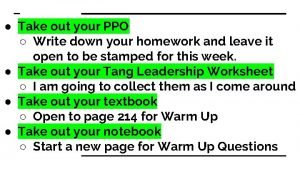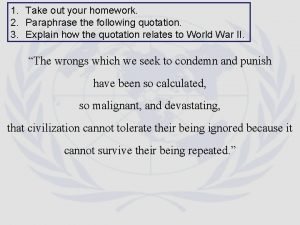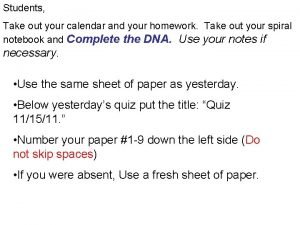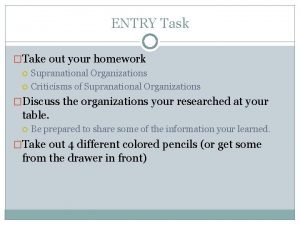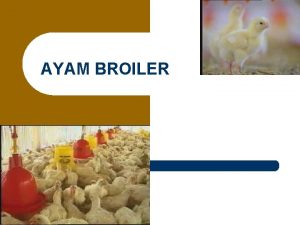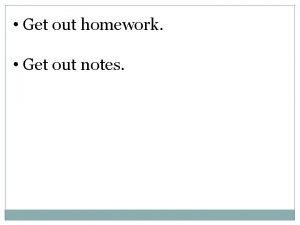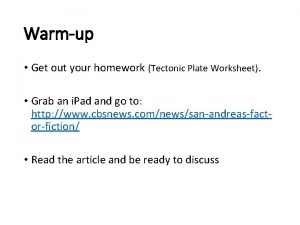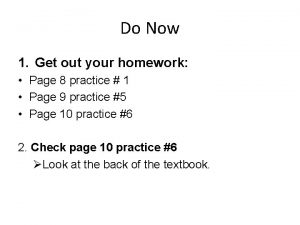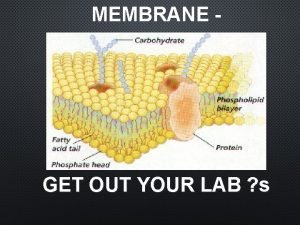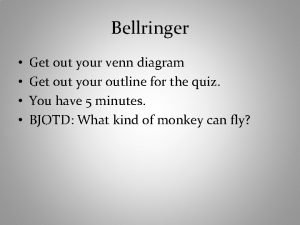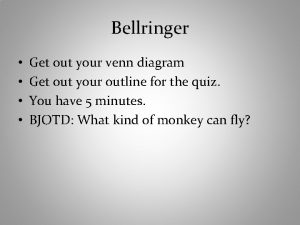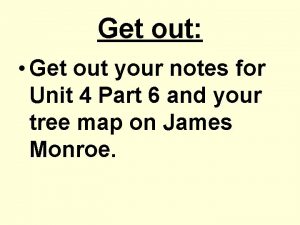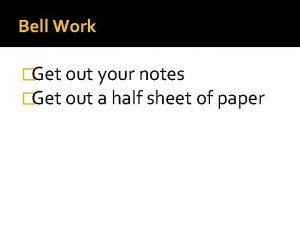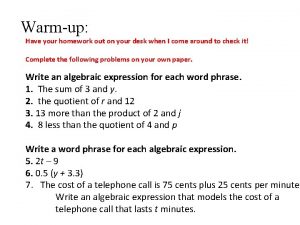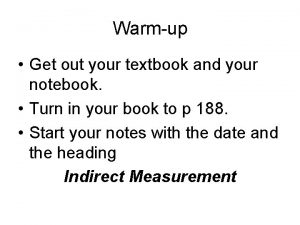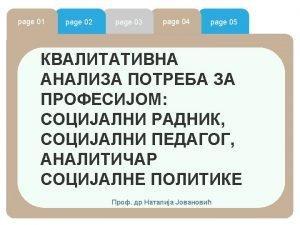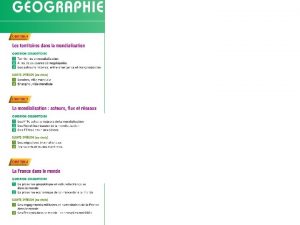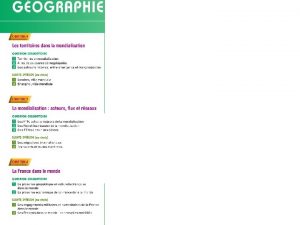Warmup Get out your homework Page 47 all


































- Slides: 34

Warm-up Get out your homework. Page 47 all 52 graphing and 53 all DUE THURSDAY is your lab DUE FRI Keyterms 61 all 69 1 -10 71 1 -5 IF you do not turn in HW this week, you will not do lbs next

Ch 2 Section 1 Solids Liquids and Gasses

1. Solids Fixed volume and shape Atoms are close, but move organized

a. Particles in a solid As long as temp is above absolute zero , -273 C or 0 K, particles are moving

b. Types of solids Crystalline solid-repeating molecular patterns. Lose crystal shape when melt. Amorphous solid melting point not distinct, will flow over time, not crystals.

2. Liquids Take shape of container BUT volume is fixed, have ability to flow

a. Particles in a liquid Packed almost as close as solid but will move freely___

Surface tension Inward pull of molecules of a liquid that brings water (liquids)molecules closer. Causes -meniscus in a cylinder and water strider to walk on water

Changes to Gas two ways Vaporization is to gas when BP is reached Evaporation is to gas when surface molecules are released. DOES not reach BP

b. viscosity Because it is a fluid and can flow. It is viscous Higher viscosity means __flows_NOT AS EASILY 10 W oil vs 60 W oil

3. Gases Flows also, is is a FLUID BUT BECAUSE volume and shape change it is now a gas.

Diagram of s, l, g


Not in book Newtonian Fluids Also known as Colloidal Suspensionsmade of both a solid and liquid. This shows characteristics of both solids and liquids.

Changes of state As energy in creases OR decreases Kinetic energy of particles will change. Colder= slower Hotter= faster

melting The temperature at which a solids particles move enough to break free from their fixed positions and become a liquid, Freezing is the opposite, vibrations slow and positions become fixed

Vaporization Particles gain enough _energy_to form a gas evaporation_- this takes place only on the SURFACE of a liquid Boiling point- temperature at which liquid changes to gas below surface as well as on surface. BP is depend on atomic structure

condensation Occurs when a gas loses kinetic energy and becomes a liquid again

Sublimation When a SOLIDS thermal energy increases so it goes directly to a GAS with NO liquid state. _dry ice

Section 3 1. Measuring gasses Use volume, Pressure and temp. PSI pounds Per square inch

Day 2 Notes Warm up Get your lab out to turn in. In comp book, explain why a meniscus forms in a graduated cylinder.

a. Volume Varies according to container

b. Temperature Dependent on average energy of gas T measures _molecular motion or KE At 20 *C about 500 m/S is speed of average gas 650 m/s in water

c. Pressure pressure= Force in NEWTONS / Area in m 2

2. Relating pressure vs volume __Boyles Law as pressure is increased at a constant Temp. the volume of a gas decreases. And as pressure is decreased the volume increases if temp remains constant



3. Relating pressure vs Temperature A. As temp goes up, molecules move more and pressure will increase. B. IN action- tire pressure on cars, friction of road and tire increases temp. so pressure will rise. This can cause blow outs on weak tires.

4. Relating Volume and Temp A. Charles law---when temp of gas is increased at a constant pressure, its volume increases. And when the temp is decreased the volume decreases

b. Charles law in action Basketball outside on a cold day vs a hot day. Or a balloon on a hot and cold day.




 Personification in the song one thing by one direction
Personification in the song one thing by one direction Get on get off
Get on get off Take out your homework
Take out your homework Vicente y francisco / jugar / al vóleibol los domingos
Vicente y francisco / jugar / al vóleibol los domingos Friction
Friction Take out your homework
Take out your homework Take out your homework
Take out your homework Take out your homework
Take out your homework Take out your homework
Take out your homework Take out your homework
Take out your homework Take out your homework
Take out your homework Take out your homework
Take out your homework Warmup ratio
Warmup ratio Warmup 65
Warmup 65 Gmass warmup
Gmass warmup Status vs class
Status vs class Pyramid warmup
Pyramid warmup Rhyme glow
Rhyme glow Multiplying with exponents
Multiplying with exponents Java warmup
Java warmup Define:warmup
Define:warmup Ethos warmup
Ethos warmup Tinman endurance coaching
Tinman endurance coaching 65 mins
65 mins Warmup end
Warmup end Sistem all in all out
Sistem all in all out Homework oh homework i hate you you stink
Homework oh homework i hate you you stink Homework oh homework i hate you you stink
Homework oh homework i hate you you stink Parts of a poem
Parts of a poem Homework oh homework jack prelutsky
Homework oh homework jack prelutsky Alitteration definition
Alitteration definition Literal and figurative language
Literal and figurative language Name a point that is collinear with the given points
Name a point that is collinear with the given points Apa format example
Apa format example You put your left foot in
You put your left foot in







